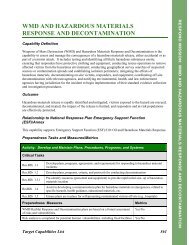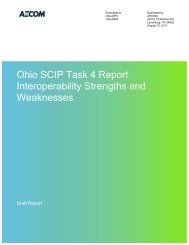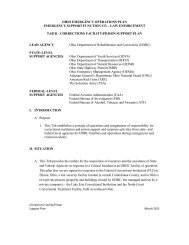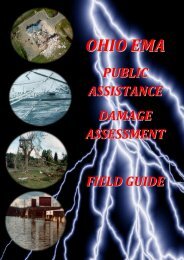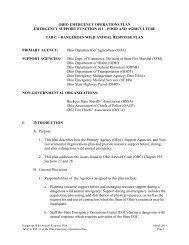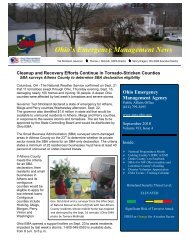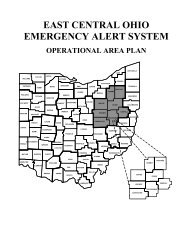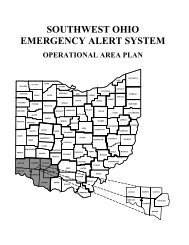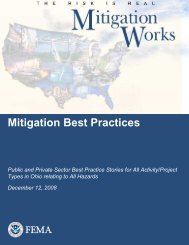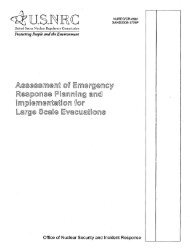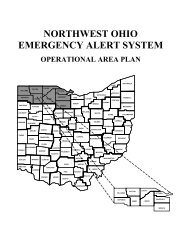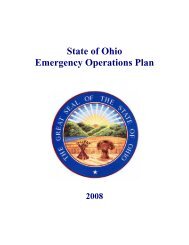SOUTHEAST OHIO EMERGENCY ALERT SYSTEM
SOUTHEAST OHIO EMERGENCY ALERT SYSTEM
SOUTHEAST OHIO EMERGENCY ALERT SYSTEM
Create successful ePaper yourself
Turn your PDF publications into a flip-book with our unique Google optimized e-Paper software.
cable systems are encouraged to purchase EAS equipment with multiple monitoring capabilities.<br />
This should include as a minimum the ability to monitor two assigned over-the-air LP broadcast<br />
stations plus a NOAA weather radio station. For LP-1 and LP-2 stations, equipment should also<br />
allow for the telephone interface of notifiers’ encoders or the interface of existing remote pickup<br />
unit equipment, if appropriate. Local Primary stations should pay particular attention to their<br />
multiple monitoring responsibilities when selecting EAS equipment.<br />
H. All participating stations and cable systems should assign a permanent input on their<br />
master control console to receive program audio from the LP station sources as shown on the<br />
station monitoring chart on Pages 24 - 26, Attachment III.<br />
XIII. TEST PROCEDURES<br />
A. EAS weekly tests of the EAS header and end-of-message codes must be conducted by all<br />
stations and cable systems in accordance with FCC Rules. This is known as the Required<br />
Weekly Test (RWT).<br />
B. Southeast Ohio Operational Area monthly tests will originate from the Southeast Ohio<br />
Local Primary (LP) station or from county Emergency Operations Centers (EOC) on the<br />
following schedule. Tests will be conducted in accordance with the FCC Rules and Regulations.<br />
Tests must be re-transmitted within 60 minutes of receipt by all participating EAS stations and<br />
cable systems. Tests originating from EOCs will be initiated from the county Emergency<br />
Management Agency on a rotational basis.<br />
17



